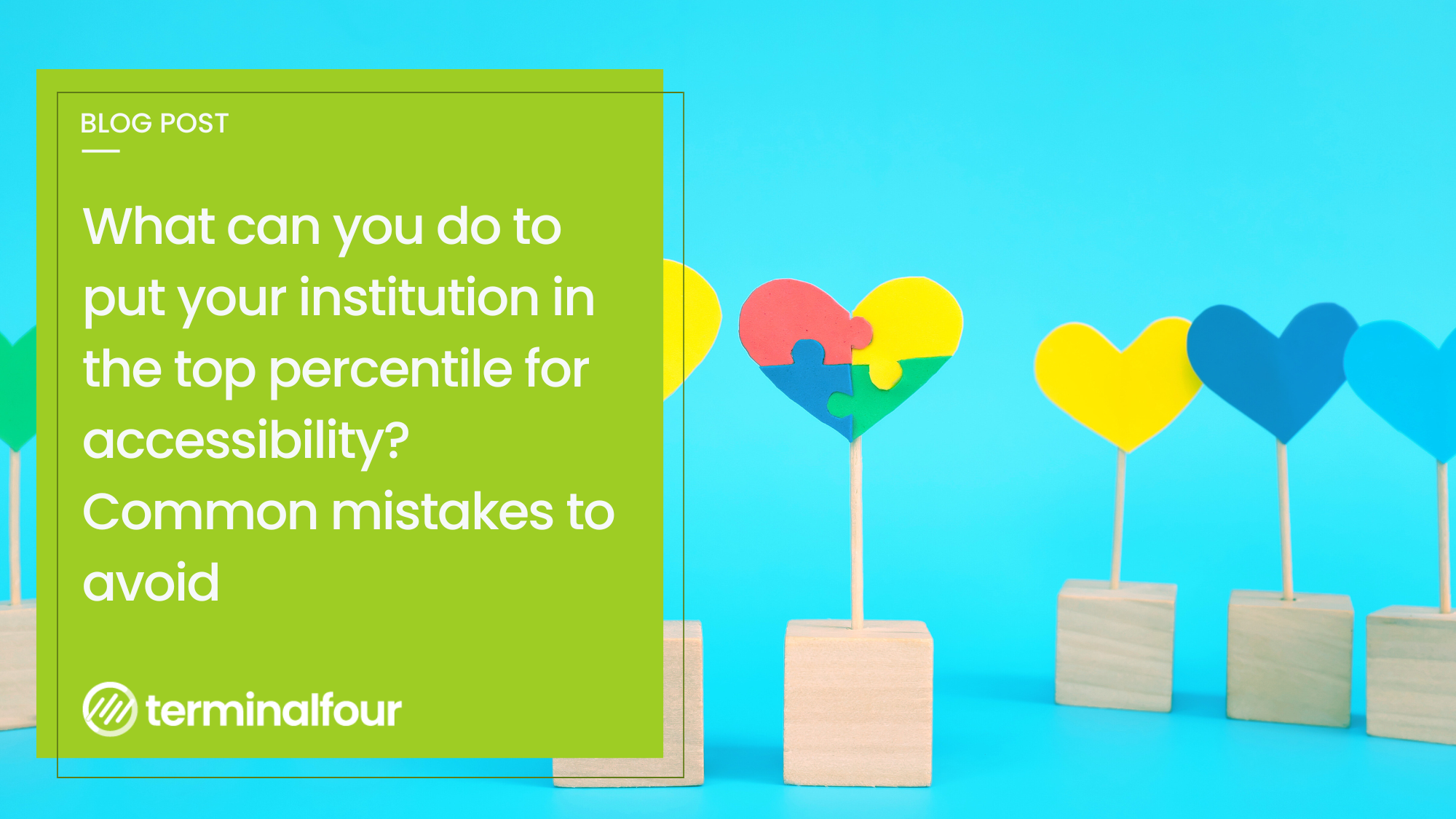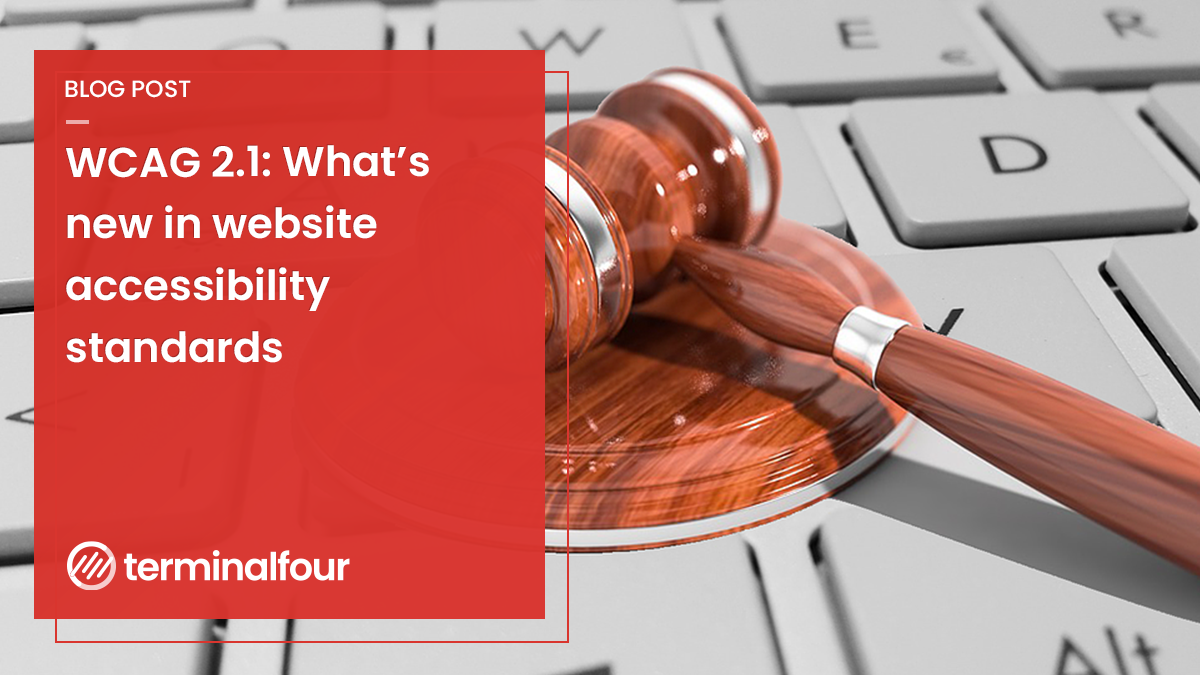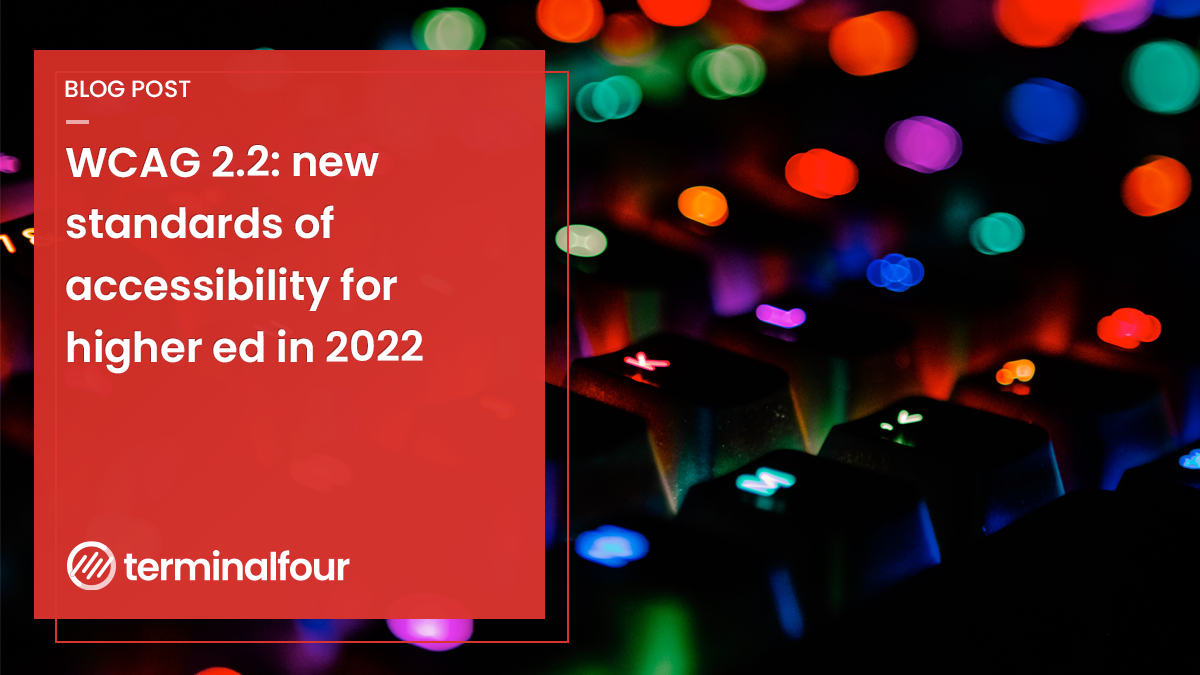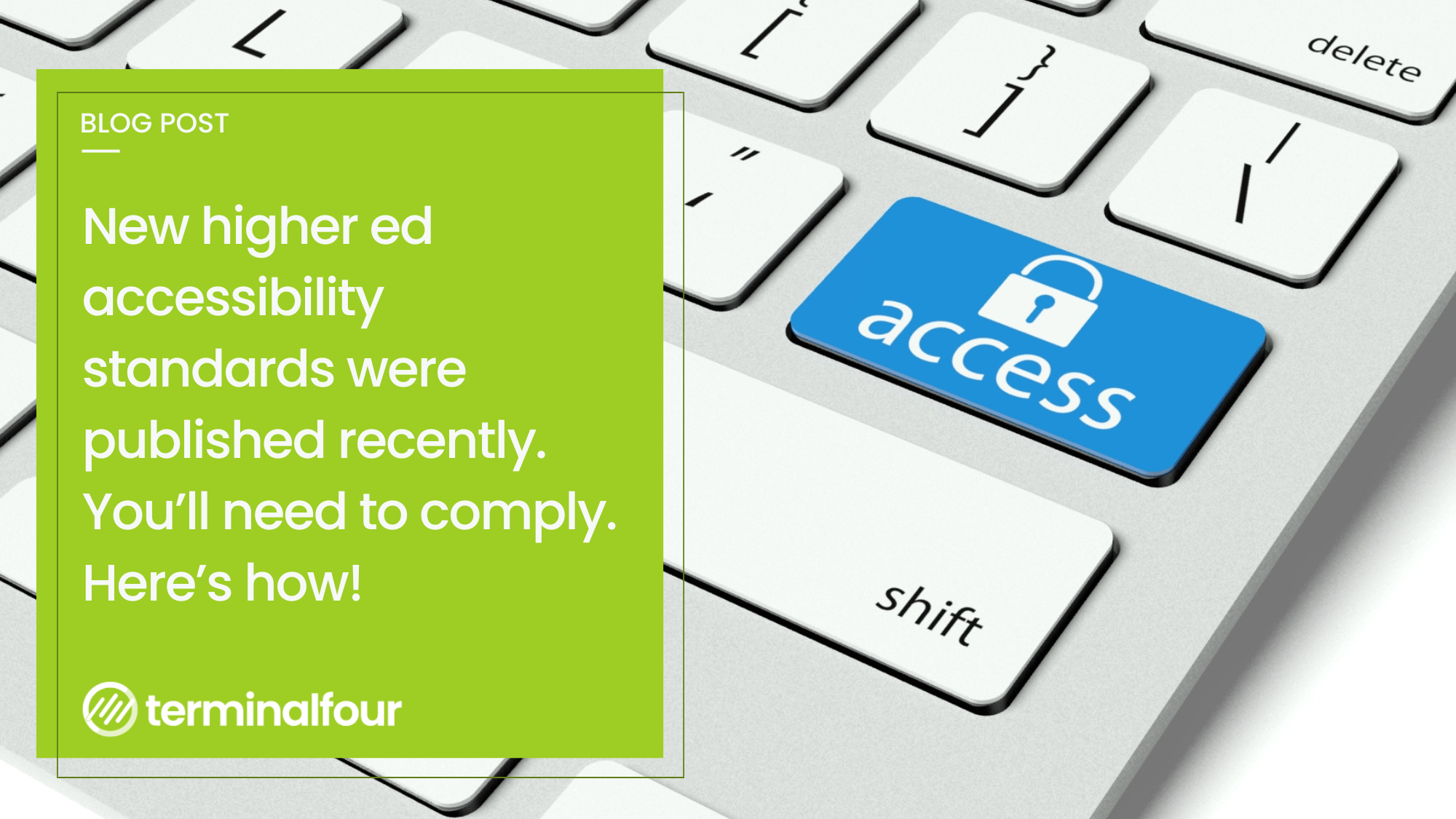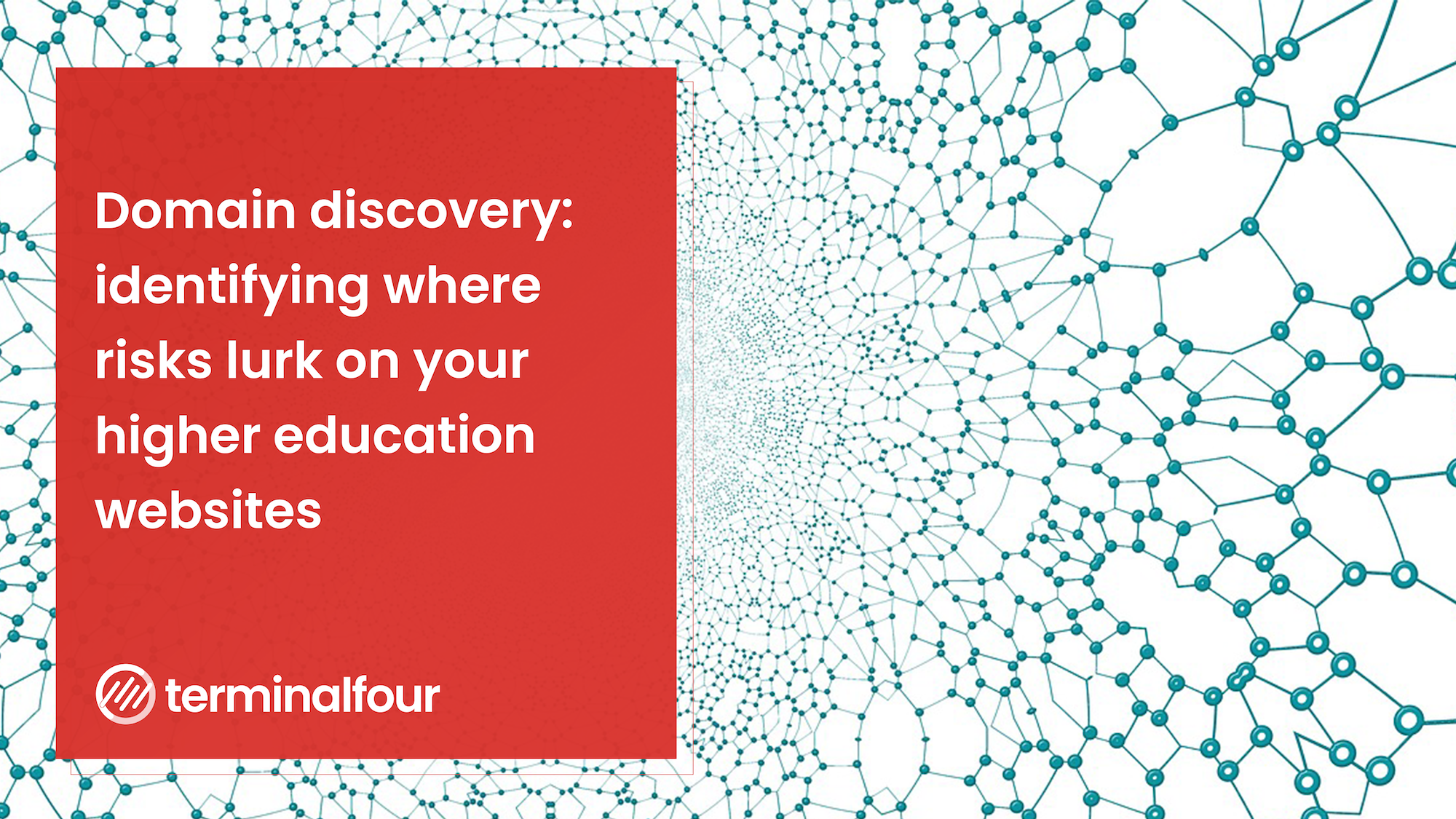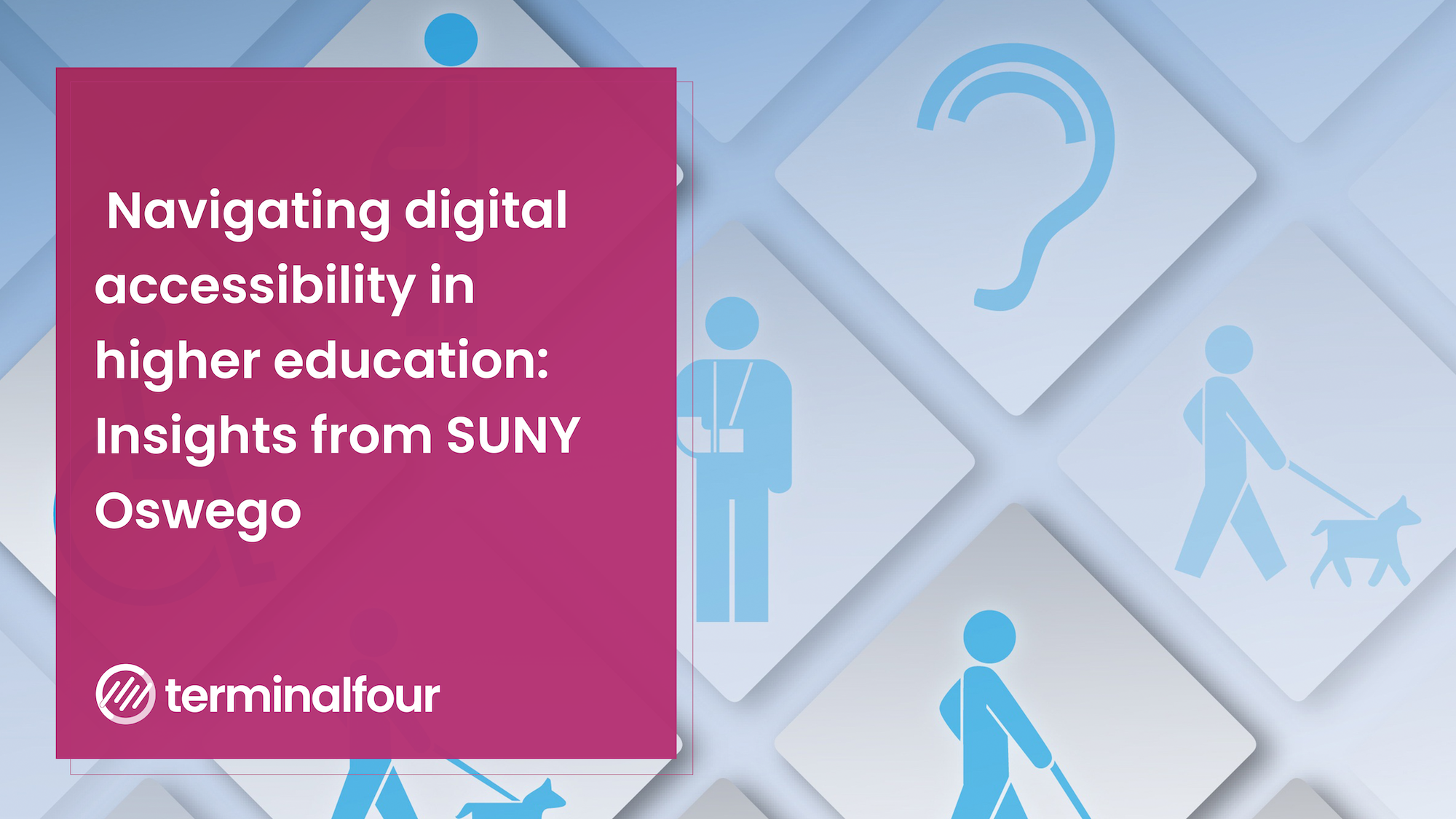As we celebrate a decade of sharing higher education digital marketing insights, we're looking back on one of the most critical topics we've covered: accessibility.
Ensuring university websites and digital platforms are accessible to all users isn't just about compliance—it's about fostering an inclusive environment where every student, faculty member, and visitor can thrive.
Over the years, we've published several articles on accessibility, guiding universities to break down digital barriers.
Accessibility isn't just a trend—it's a fundamental aspect of creating inclusive and welcoming digital environments in higher education—and also a legal requirement.
Today, we round up our five most read and relevant accessibility articles that provide actionable insights into how you can make your higher education websites and digital assets more accessible.
By learning from past mistakes, staying updated on new standards, and implementing strategic changes, you can ensure that your websites and digital platforms are accessible to everyone.
If you haven’t read these articles already, now's the perfect time to revisit them and take actionable steps toward a more inclusive and accessible digital campus.
1. The top website accessibility mistakes that even great university sites make
This article dives into the most common accessibility errors that even well-established university websites can fall victim to.
From improper use of alt text to navigation issues, we highlight how easily overlooked mistakes can alienate users with disabilities.
Despite the increased focus on accessibility in recent years, many of these mistakes are still appearing on higher education websites.
Understanding and addressing them is essential for any university aiming to improve user experience and compliance.
Our key takeaway: Even the most polished university websites can miss critical accessibility details—always audit your site with a focus on inclusive design.
2. WCAG 2.1 and WCAG2.2: What you need to know and 2024 updates
Keeping up with evolving accessibility standards is critical for universities committed to providing an inclusive online experience.
These three articles will give you an all-round guidance on WCAG 2.1 and 2.2 when it comes to web accessibility standards and what you need to do.
WCAG 2.1 Web accessibility: What do the latest standards mean for your university?
This article offers a general overview of WCAG 2.1 and the importance of staying informed about new guidelines—and how to do it. Read this before you move on to WCAG 2.2.
Are you ready for WCAG 2.2? What you need to know about accessibility
Jump into the key updates introduced by WCAG 2.2, which was released in October 2023 and read up on the practical advice on implementing these changes.
New accessibility updates: what higher education needs to do and know
Finally, this article, published in July 2024 takes a deeper dive into the latest developments and their implications for higher education institutions.
Together, this series of articles equips universities with the knowledge you need to remain compliant and foster an accessible digital environment for all users.
Accessibility standards are continually updated to better serve users with disabilities. Make sure you stay informed to maintain compliance and provide an inclusive digital experience.
Our key takeaway: Staying informed about the latest standards is crucial for ongoing accessibility compliance and fostering an inclusive digital campus. Stay tuned to the Terminalfour blog for more updates as they become available.
3. Unlocking the power of domain discovery for higher education digital marketing
In this article, written by accessibility experts Little Forest, we offered practical tips to enhance the accessibility of your university’s website.
We looked at how domain discovery can revolutionize your university's digital marketing efforts.: by understanding and analyzing domain data, you can better target prospective students, optimize your online presence, and enhance your marketing strategies.
Domain discovery provides deeper insights into your audience's behavior, making your digital marketing more effective and personalized.
This article provides actionable strategies to ensure your digital presence is inclusive, helping you create a welcoming experience for all users, including those with disabilities.
Our key takeaway: Leveraging domain discovery can significantly enhance your university's digital marketing strategy by providing valuable insights into audience behavior, allowing for more targeted and effective outreach.
4. Breaking digital barriers: 10 strategies for your higher ed site accessibility
In this article, written with higher education accessibility experts Little Foreste , we discussed 10 actionable strategies to improve the accessibility of your university websites.
From designing with accessibility in mind to regularly testing and updating sites, we offer a comprehensive guide for higher education institutions, with a
Accessibility is an ongoing process, and this article offers a wealth of practical tips that can be implemented immediately to improve the inclusivity of digital spaces.
Our key takeaway: Implementing even a few of these strategies can significantly enhance the accessibility of your university’s website, ensuring that it serves all your users effectively.
Finally, there's nothing as useful as looking at a specific case study. In this article, we spoke to Web Content Strategist Kate Deforest from SUNY Oswego's Digital Services team to explore how the university tackled the challenge of making their digital content more accessible.
We shared their step-by-step process, from assessing their current state to implementing effective solutions.
We looked at challenges they faced and the strategies they employed to overcome them, providing strategies you can apply to your own institution’s accessibility efforts.
Real-world examples of accessibility efforts can inspire and guide other universities in your own journeys: use SUNY Oswego’s story to see how accessibility improvements can be achieved.
Our key takeaway: Learning from other universities' experiences can offer practical insights and inspiration for your own accessibility initiatives.
What are your top accessibility challenges for 2024? Let us know in the comments below or on social media.

:format()//media/top-insights-on-accessibility-for-higher-education--RQ-(2).png)
